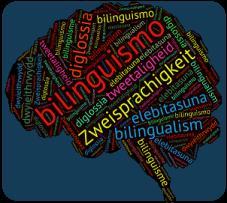Both papers to appear in the forthcoming Special Issue on Structure in words: the present and future of morphological processing in a multidisciplinary perspective
Leminen, A., Smolka, E., Duñabeitia, JA. & Pliatsikas, C. (2018): Morphology in the brain: the good (inflection), the bad (derivation) and the ugly (compounding). Cortex, DOI:10.1016/j.cortex.2018.08.016
To access, click here
Abstract
There is considerable behavioral evidence that morphologically complex words such as ‘tax-able’ and ‘kiss-es’ are processed and represented combinatorially. In other words, they are decomposed into their constituents ‘tax’ and ‘-able’ during comprehension (reading or listening), and producing them might also involve on-the-spot combination of these constituents (especially for inflections). However, despite increasing amount of neurocognitive research, the neural mechanisms underlying these processes are still not fully understood. The purpose of this critical review is to offer a comprehensive overview on the state-of-the-art of the research on the neural mechanisms of morphological processing. In order to take into account all types of complex words, we include findings on inflected, derived, and compound words presented both visually and aurally. More specifically, we cover a wide range of electro- and magnetoencephalography (EEG and MEG, respectively) as well as structural/functional magnetic resonance imaging (s/fMRI) studies that focus on morphological processing. We present the findings with respect to the temporal course and localization of morphologically complex word processing. We summarize the observed findings, their interpretations with respect to current psycholinguistic models, and discuss methodological approaches as well as their possible limitations.
Wheeldon, L., Schuster, S., Pliatsikas, C., Malpass, D. and Lahiri, A. (2018) Beyond decomposition: processing zero-derivations in English visual word recognition
To access, click here
Abstract
Four experiments investigate the effects of covert morphological complexity during visual word recognition. Zero-derivations occur in English in which a change of word class occurs without any change in surface form (e.g., a boat-to boat; to soak-a soak). Boat is object-derived and is a basic noun (N), whereas soak is action-derived and is a basic verb (V). As the suffix {-ing} is only attached to verbs, deriving boating from its base, requires two steps, boat(N)>boat(V)>boating(V), while soaking can be derived in one step from soak(V). Experiments 1 to 3 used masked priming at different prime durations to test matched sets of one and two-step verbs for morphological (soaking-SOAK) and semantic priming (jolting-SOAK). Experiment 4 employed a delayed-priming paradigm in which the full verb forms (soaking and boating) were primed by noun and verb phrases (a soak/to soak, a boat/to boat). In both paradigms, different morphological priming patterns were observed for one-step and two-step verbs, demonstrating that morphological processing cannot be reduced to surface form-based segmentation.

